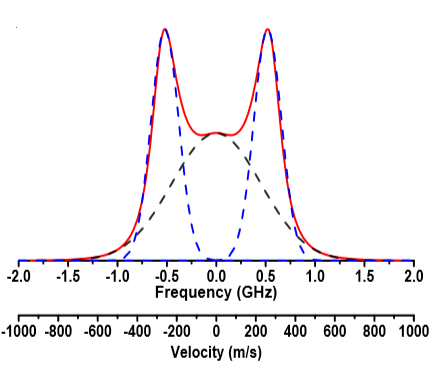Research
Our research group focuses on using single shot coherent Rayleigh-Brillouin scattering (CRBS) for application in neutral gas as well as plasma flows.
Coherent Rayleigh-Brillouin scattering is a non-resonant, four-wave mixing technique in which a moving optical lattice is created in a medium by the interference of two, equipolarized, high intensity laser beams of precisely tailored relative frequency difference between them, called the pumps. A third beam, termed the probe, normally polarized to the pumps, is incident upon this lattice at the Bragg angle. This results in a fourth beam, termed the signal (Fig. 1). In comparison to spontaneous Rayleigh-Brillouin scattering (SRBS), where the scattering occurs in a 4π solid angle, the resulting CRBS signal beam is another laser beam, maintaining the characteristics of the probe. This gives a high signal-to-noise ratio (SNR) and high spatial resolution, which allows for remote measurements in areas where the placement of a detector right next to the scattering region would be impractical or even impossible (such as in an arc discharge, a flame, a wind-tunnel etc), without sacrificing signal collection.

By scanning the velocity of the lattice, CRBS effectively scans across the thermal velocity distribution function of a neutral gas (Figure 2). The end result is the CRBS spectrum which is the summation of three peaks (Figure 3):
-The Rayleigh peak due to the particles’ individual motion
-The two Brillouin peaks, equidistant from the Rayleigh, due to the acoustic waves that are driven by the lattice.
CRBS has proven to be a powerful technique for the determination of the temperature, speed of sound, pressure, polarizability, shear, and bulk viscosity of a gas or gas mixture.

